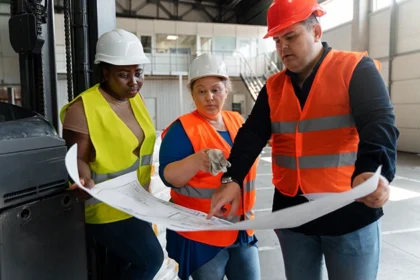Pressure washing can greatly improve the appearance of a home or property, but deciding whether to do it yourself or hire a professional depends on several factors. Choosing between DIY and professional pressure washing hinges on budget, experience, and the complexity of the job.
DIY pressure washing offers control and cost savings but requires knowledge of equipment and safety precautions. Professional services provide expertise and efficiency, especially for large or delicate surfaces.
Understanding the pros and cons of each option helps property owners make an informed decision that suits their needs and avoids potential damage or wasted effort.
Comparing DIY and Professional Pressure Washing
Deciding between DIY and professional pressure washing involves weighing factors such as the quality of cleaning, overall costs, safety concerns, and the amount of time involved. Each option has distinct advantages and limitations that affect the final outcome and user experience.
Effectiveness and Results
Professionals use industrial-grade equipment that typically delivers higher water pressure and more consistent cleaning than consumer-grade machines. According to GWS, a Miami-based pressure washing company, this allows them to remove deep-set stains, mold, and mildew more thoroughly.
DIY machines often struggle with tough grime or large surfaces. While suitable for light cleaning tasks, they may leave residue or require multiple passes, which can reduce efficiency.
Professionals also adjust techniques based on surface type to prevent damage. DIY users risk applying too much pressure or incorrect nozzles, which can cause etching or stripping of paint.
Cost Analysis and Budget Considerations
DIY pressure washing usually requires an upfront investment in equipment rental or purchase, which ranges from $50 for a basic rental to $300+ for an owning a machine. Adding cleaning solutions and water expenses can raise costs.
Hiring a professional generally costs between $150 and $400 per job, depending on area size and difficulty. While more expensive upfront, it covers labor, expertise, and equipment without extra purchases.
For frequent or large jobs, owning or renting a machine might be cost-effective. For occasional or complex cleaning, professionals offer better value by reducing risk and ensuring quality.
| Aspect | DIY | Professional |
| Upfront Cost | Equipment $50–$300+ | $150–$400 per job |
| Additional Costs | Cleaning agents, water | None (included) |
| Frequency Impact | Cheaper if frequent | Better for occasional use |
Safety and Risk Factors
DIY users face risks including high-pressure injuries, electrical hazards if equipment is misused, and potential falls from unstable surfaces. Lack of training increases the chance of accidents.
Professionals undergo safety training and use protective gear. They know how to handle different surfaces and avoid damaging property or harming themselves.
Incorrect use of pressure washers can also damage siding, windows, or landscaping. Professionals reduce these risks with proper settings and cleaning methods, ensuring safety for both worker and property.
Time Commitment and Convenience
DIY pressure washing requires time for preparation, operation, and cleanup. Setup may include assembling equipment and moving furniture or vehicles. Depending on experience, it can take several hours to complete.
Hiring professionals minimizes personal time involvement. They arrive with all necessary equipment and finish faster due to expertise and better tools.
DIY suits those with flexible schedules and smaller jobs. Professionals fit those seeking quick, hassle-free service or dealing with large, difficult-to-clean areas.
Deciding Which Method Is Right for You
Choosing between DIY and professional pressure washing depends on factors like the size and type of the project, availability of proper equipment and skills, and plans for ongoing maintenance. These considerations will help determine which option aligns best with specific needs and resources.
Project Scope and Surface Types
The size of the area to be cleaned plays a major role. Small patios or decks might be manageable with a rented or consumer-grade pressure washer. Larger surfaces like house exteriors or extensive driveways usually require commercial machines for effective cleaning.
Surface material is also critical. Delicate surfaces such as wood or painted siding need careful pressure and technique. Professionals are trained to adjust pressure settings to avoid damage. DIY users may risk harm if inexperienced or if equipment lacks adjustable PSI controls.
Access to Equipment and Expertise
Professionals have access to industrial-grade equipment and specialized detergents. They also bring experience in handling various stains and surfaces safely. This reduces the likelihood of damage and ensures a thorough clean.
DIY pressure washing requires renting or buying equipment, which can be expensive and complex to operate. Users must understand pressure levels, nozzle types, and safety precautions to avoid injury or property damage. Without proper knowledge, results may be inconsistent or incomplete.
Long-Term Maintenance Planning
Regular cleaning extends surface life and curb appeal. Professionals can recommend tailored maintenance schedules based on material type and environmental conditions. They may offer service contracts to ensure periodic upkeep.
A DIY approach demands consistent effort and knowledge to maintain results over time. Homeowners must be able to identify when cleaning is needed and be prepared to invest time. Inconsistent maintenance can lead to buildup or deterioration, increasing repair costs later.










